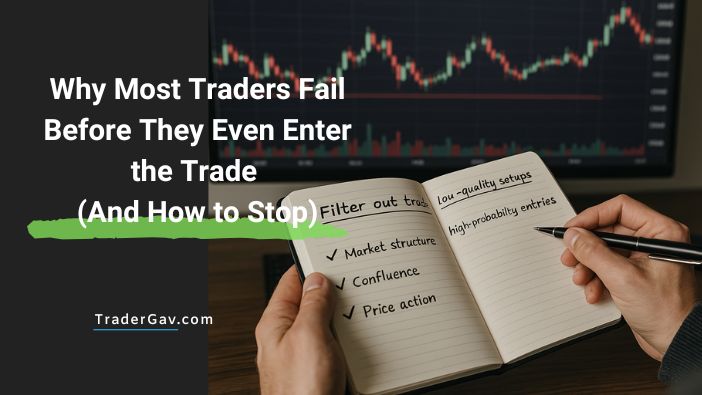This morning, I watched price chop around the middle of a range like it hadn’t had coffee yet. No real direction. Just… existing. I sat there, fingers twitching over the mouse. And I thought: This is how it starts, right? The death-by-a-thousand-trades mindset. The “it’s close enough” disease. Yeah. Been there. And if you’ve ever […]
Back to Basic
Stop Getting Stopped Out: The Truth About Liquidity Grabs & Smart Stop Placement
You enter a trade, set your stop, and sit back. Everything looks good, until, bam! Price barely tags your stop before reversing exactly where you expected. Annoying, right? I get it. It feels personal, like the market is out to get you. But let me be blunt: it’s not personal. You’re just placing your stops […]
Struggling in the Markets? You Might Be Trading the Wrong Timeframe
Think about it, if trading feels like a constant battle, your problem might not be your strategy, your indicators, or even the market itself. It might just be your timeframe. I fully understand the frustration. You enter a trade, price whipsaws, stops you out, then reverses and runs straight to your original target. Annoying, right? […]
How to Overcome Trading Anxiety: A Step-by-Step Guide to Staying Calm Under Pressure
Let’s be honest. Trading can be stressful as hell. Your money is on the line. The market moves fast. And just when you think you’ve got it all figured out, BAM—price reverses, and you’re left staring at a red P&L like it just insulted your family. Anxiety in trading is real. But here’s the truth: […]
Why Most Traders Fail: The Psychological Traps That Destroy Your Profits
Let’s cut the fluff. Most traders don’t blow their accounts because of bad strategies. It’s not the market, your broker, or some “manipulation” nonsense. The real killer? Your own mind. Trading is psychological warfare, against yourself. If you don’t master your emotions, you’re dead money. So let’s break down the biggest mental pitfalls wrecking your […]
How to Do a Daily and Weekly Trade Review: A Step-by-Step Guide
Most traders don’t review their trades properly. They think they do, but staring at a chart after a loss, shaking your head, and moving on doesn’t count. If you’re serious about improving, you need a structured, no-BS process. Here’s how to review your trades properly so you stop making the same mistakes and actually improve. […]







